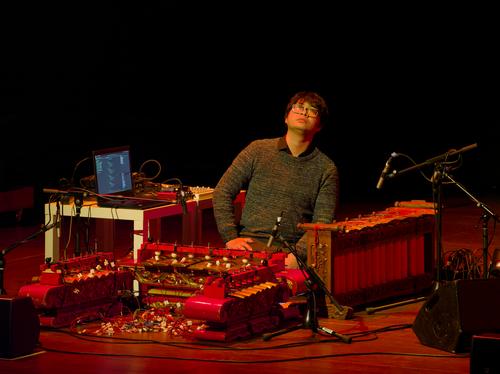
Editorial
The third issue of tekhnē journal is an outcome of a new thematic strand – Resynthesising the Traditional – initiated by CTM Festival in 2025 together with co-curator Stas Shärifullá. The strand aims to cultivate artistic practice, research, and exchange on how to critically engage with sonic/artistic heritage, folklore, situated knowledge, customs, technologies, and other aspects of “the traditional.” Resynthesis — a processing method in computer music that analyses sounds to extract their fundamental components — is used here as a guiding metaphor to confront conservative views of tradition as something frozen, solidified, and generally untouchable, thus resistant to any transformative practices. Instead it amplifies an understanding of tradition as something continuously mutating in the face of a changing present.
The series of articles featured in this journal edition explore four very different localities and scenes, which despite their differences also highlight a convergence of questions, tensions, and potentials when working with “the traditional.” The artists and communities portrayed within grapple with notions of how to meaningfully connect to aesthetics, knowledge, and histories of traditions in contemporary contexts, while resisting sociopolitical misuses and exoticisation. The forms and practices they (re)connect with are not always so old, which throws light on the ongoing process of forming traditions – into the present – and raises the questions: what makes a tradition a tradition? Who defines it?
Changing technologies are a crucial element of this process, as seen in all of the articles featured here. In connecting past artforms with electronic music tools or sound system technologies, global distribution channels or contemporary compositional techniques, new sonic forms inevitably arise. In engaging with the process of mutating traditions we have to ask: what defines a tradition? How do traditions remain recognisable? When do they change into something completely new?
In the shadows of a fraught political landscape reshaping cultural identity through a nationalist lens, Slovakia's experimental music scene confronts its roots, rethinks tradition, and reimagines folklore for a fractured present. Theorist and artist Ján Solčáni speaks to several actors and initiatives on the scene who reinterpret the sounds of the past, examining tensions and resistance to essentialist instrumentalisation of “the traditional.”
Tracing the intersections between two extreme sonic worlds – the traditional trance ceremonial réak and metal – the musician and researcher Luigi Monteanni examines how a localised traditional sound and a contemporary global genre have influenced each other in West Java, Indonesia, creating unlikely alliances in the ongoing resistance to cooptation by neoliberal politics.
The Caribbean-Canadian artist and researcher and “Femmehall” practitioner Alanna Stuart explores how one can resynthesize sound system technologies and redraw the traditionally male-dominated sound system culture. Her deeply personal research takes her back to her family’s roots in Jamaica, the birthplace of sound system culture, and focuses on how contemporary queer and female communities in Toronto – home to the third largest Jamaican diaspora – are actively shaping this heritage across various generations.
The Qazaq poet and creative producer Anuar Duisenbinov speaks to intergenerational voices in Qazaqstan’s music and art community who each in their own way connect to traditional musics and forms. Through discussions with Yermek Kazmukhambetov, Tokzhan Karatai, Saida Yelemanova, SAMRATTAMA, and Medina Bazarğali we hear of spirituality and landscape; of history, colonisation, and archives; of how traditions are shaped and transmitted in aural cultures; and how all of this might extend into contemporary music, pop, and club cultures.
Through these conversations, the authors and their protagonists point to the understanding that tradition doesn’t live outside of practice, and hence to a “doing” aspect of knowledge that is at the core of tekhnē, and the tekhnē project.